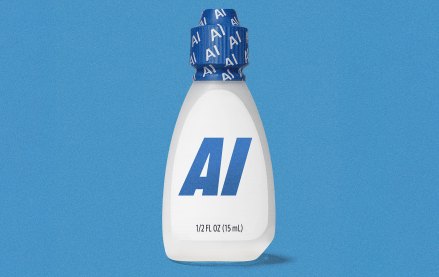
Make Up For Ever has digital to thank for “unlocking access” to a whole new customer, said general manager Laure de Metz.
The French, LVMH-owned makeup brand was launched in 1984 by Dany Sanz, a makeup artist who wanted to create a line of beauty products specifically for professional use. Highly pigmented eyeshadows in an unprecedented 210 shades, opaque gel eyeliners and powerful matte foundations mark Make Up For Ever’s brand, originally intended for high-performance photo shoots and camera work.
But because Make Up For Ever set out to create specialized products for the industry, its consumer pool was limited as a result.
“We’ve had the challenge of selling to small, tight communities that don’t talk very loudly,” said de Metz during the FACC Luxury Symposium last week. “It was hard for us to tell our story when we didn’t control our own relationship with the consumer. Digital unlocked that for us, and opened up an entirely new customer.”
On social media platforms like Facebook (3 million fans), YouTube (27,000 subscribers), Twitter (402,000 followers) and Instagram (1.9 million followers), Make Up For Ever was able to get face-to-face with beauty customers outside of the realm of professional artists. It uses its YouTube account to show users how to apply professional-grade products, like its HD foundation, for everyday wear. It also gives glimpses at the work done within its artist training program, Make Up For Ever Academy, like this video of a body painting final exam.
On Instagram, followers can go behind the scenes at photo shoots and also learn about new product launches. The brand also recently joined Snapchat to announce its new celebrity spokesperson, Charli XCX.
While Make Up For Ever’s core client is still the professional, de Metz acknowledged that YouTube how-tos and beauty blogs have given rise to a more knowledgeable everyday consumer. Make Up For Ever is now sold in-stores exclusively at Sephora, as well as through its online store and Amazon.
“What works for the pros should work for the general public,” said de Metz. “Beauty consumers are so savvy, and technically advanced these days, they expect the best performing product out there.”
Make Up For Ever creates high-performing beauty products with input from TV and film production companies. As cameras advance to become more high-definition, the beauty brand creates new foundation formulas to stand up to the clarity. Hi def, said de Metz, was “terrifying” for production crews, as it highlighted every pore and flaw on people’s faces. The most recent camera definition, the 4K camera, is also built into the iPhone 6, meaning every selfie or Snapchat video is a highly exposing moment.
Digital think tank L2 ranked Make Up For Ever in the ‘gifted’ category in its 2015 Beauty IQ Index report, which surveys makeup brands’ digital repertoire. The company specializes in “robust tutorials and videos that promote purchases,” accord to L2 analysts.
These online efforts have helped the brand expand. As Make Up For Ever continues to grow as a consumer-facing makeup company, LVMH credited it for helping to drive its cosmetics business up by 26 percent, to $600 million. The Make Up For Ever Ultra HD foundation, released in 2015, became Sephora’s best-selling foundation and promoted revenue growth, according to LVMH CEO Bernard Arnault.
De Metz said that competing makeup brands aren’t designing products with the professional TV and beauty industries in mind, and that’s what her company will continue to do. At the same time, it’s using its social platforms and other techniques to draw in new customers, like joining Snapchat and tapping Charli XCX as a brand ambassador.
“The needs of the everyday woman is the same as the need of a professional,” said de Metz. “You’re taking a selfie, that’s the same camera that’s being used in HD on the nightly news.”
More in Marketing

Lowe’s wants to do more with AI shopping in 2026
Mylow, a shopping assistant powered by ChatGPT that launched in March, is already driving double the conversion rate for online shoppers.

‘This isn’t the old pre-roll world’: YouTube has been talking TV — now it’s selling that way
YouTube is ramping up efforts to get TV’s largest advertisers to move more of their budget into its platform.

As every screen becomes shoppable, attribution problems resurface
As more media environments become points of purchase, attribution and measurement remain the thorn in the side of commerce execs.








